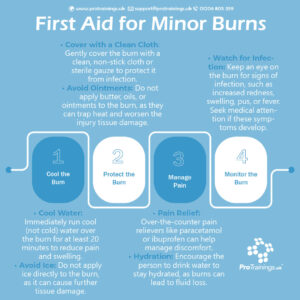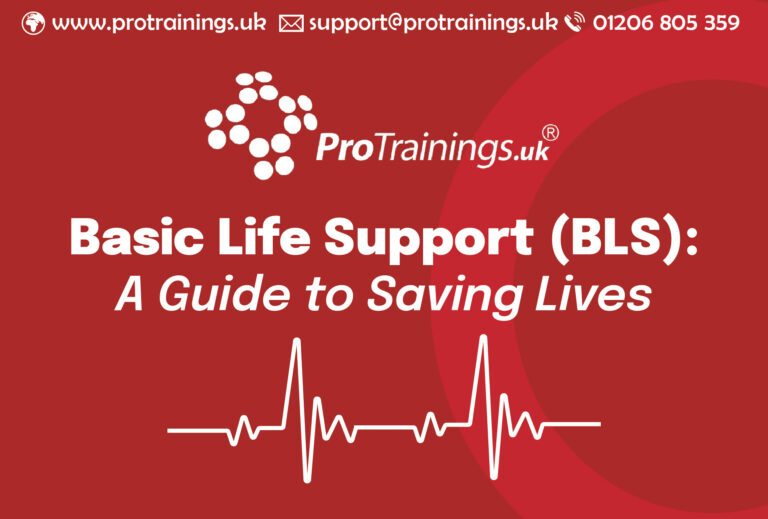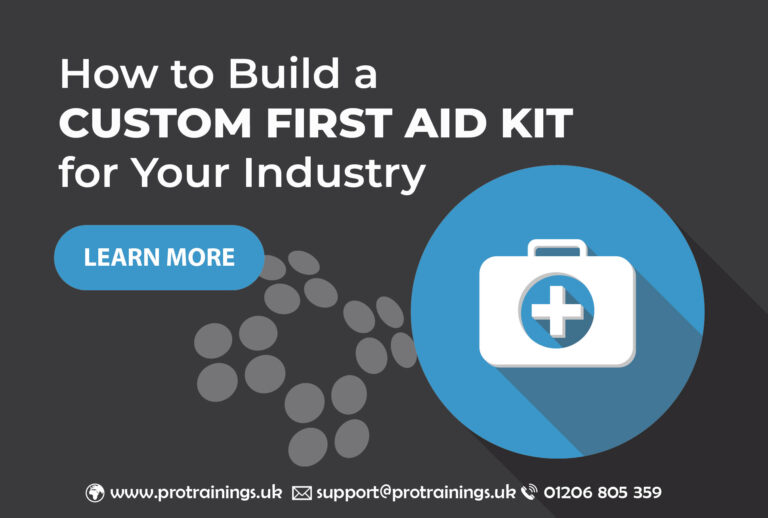First Aid for Burns: How to Treat Minor and Severe Burns
 Burns are a common household injury, and knowing how to treat them properly can make a significant difference in recovery. Whether you’re dealing with a minor burn or a severe one, it’s crucial to act quickly and appropriately. This guide will walk you through the essential first aid steps for treating both minor and severe burns.
Burns are a common household injury, and knowing how to treat them properly can make a significant difference in recovery. Whether you’re dealing with a minor burn or a severe one, it’s crucial to act quickly and appropriately. This guide will walk you through the essential first aid steps for treating both minor and severe burns.
1. Understanding Different Types of Burns
Before administering first aid, it’s important to understand the different types of burns:
- Superficial Burns: These burns affect only the outer layer of the skin. Symptoms include redness, mild swelling, and pain. Sunburn is a common example of a first-degree burn.
- Partial Thickness Burns: These burns extend beyond the outer layer of the skin and cause blisters, severe pain, and more pronounced swelling.
- Full Thickness Burns: These are serious burns that damage all layers of the skin and possibly underlying tissues. The area may look white, charred, or leathery, and the person might feel little or no pain due to nerve damage.
2. First Aid for Minor Burns (Superficial and Small Partial Thickness Burns)
For minor burns, prompt first aid can prevent complications and promote healing:
Step 1: Cool the Burn
- Cool Water: Immediately run cool (not cold) water over the burn for at least 20 minutes to reduce pain and swelling.
- Avoid Ice: Do not apply ice directly to the burn, as it can cause further tissue damage.
Step 2: Protect the Burn
- Cover with a Clean Cloth: Gently cover the burn with a clean, non-stick cloth or sterile gauze to protect it from infection.
- Avoid Ointments: Do not apply butter, oils, or ointments to the burn, as they can trap heat and worsen the injury.
Step 3: Manage Pain
- Pain Relief: Over-the-counter pain relievers like paracetamol or ibuprofen can help manage discomfort.
- Hydration: Encourage the person to drink water to stay hydrated, as burns can lead to fluid loss.
Step 4: Monitor the Burn
- Watch for Infection: Keep an eye on the burn for signs of infection, such as increased redness, swelling, pus, or fever. Seek medical attention if these symptoms develop.
3. First Aid for Severe Burns (Large Partial Thickness and Full Thickness Burns)
Severe burns require immediate medical attention. Here’s what to do while waiting for emergency services:
Step 1: Call 999 Immediately
- Seek Emergency Help: Call 999 or your local emergency number immediately. Describe the burn and follow the operator’s instructions.
Step 2: Protect the Burned Area
- Remove from Danger: If possible, remove the person from the source of the burn (e.g., fire, hot liquids, chemicals).
- Do Not Remove Stuck Clothing: Do not try to remove clothing that is stuck to the burn, as this can cause more damage.
- Cool the Burn: If it’s safe, gently pour cool water over the burn for 20 minutes. Avoid using ice or very cold water.
Step 3: Cover the Burn
- Sterile Dressing: Cover the burn with a clean, non-stick cloth or sterile dressing. Do not use fluffy materials, as they can stick to the burn.
Step 4: Treat for Shock
- Lay Them Down: Help the person lie down and elevate their legs to reduce the risk of shock.
- Keep Warm: Cover the person with a blanket, avoiding the burn area, to keep them warm.
4. Special Considerations for Chemical and Electrical Burns
Certain types of burns require specific first aid measures:
Chemical Burns:
- Flush with Water: Immediately flush the affected area with copious amounts of cool water for at least 20 minutes. If the chemical is in the eyes, rinse for at least 30 minutes.
- Remove Contaminated Clothing: Carefully remove any clothing contaminated by the chemical.
- Seek Medical Help: Even if the burn seems minor, seek medical attention, as chemical burns can worsen over time.
Electrical Burns:
- Turn Off the Power: Ensure the power source is turned off before approaching the person.
- Call 999: Electrical burns can cause internal damage, so it’s crucial to seek emergency medical care.
- Monitor Breathing and Pulse: Be prepared to perform CPR if the person is unresponsive or not breathing.
5. When to Seek Medical Attention
It’s important to know when a burn requires professional medical treatment:
- Large Burns: Any burn larger than the size of the person’s palm.
- Face, Hands, Feet, or Genitals: Burns on these sensitive areas require medical attention.
- Full Thickness Burns: Burns with white, charred, or numb skin.
- Infected Burns: Signs of infection, such as increased redness, swelling, pus, or fever.
- Chemical and Electrical Burns: These burns always require a medical evaluation, regardless of their severity.
Conclusion
Knowing how to provide first aid for burns is an essential skill that can prevent further injury and promote healing. Whether dealing with a minor burn or a more serious injury, quick and appropriate action can make a significant difference in the outcome. Always remember to seek medical attention for severe burns or if you’re unsure about the severity of the injury.




